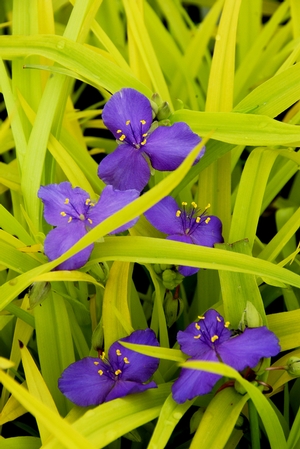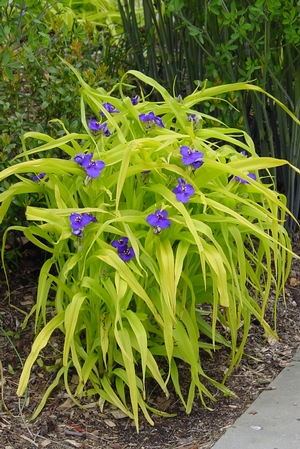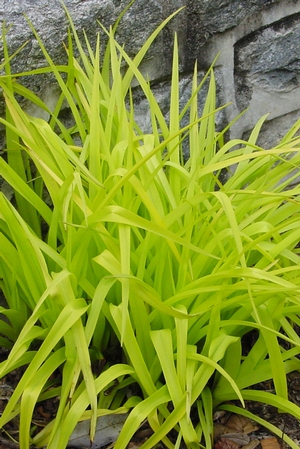Tradescantia 'Sweet Kate'
Common: spiderwortTradescantia 'Sweet Kate' - 50 per flat
- Height: 18"
- Spread: 12"-18"
- Spacing: 12"
- Hardiness Zone(s): 5-8


Tradescantia 'Sweet Kate' - 50 per flat


'Sweet Kate' is an easy-to-grow perennial that produces a profusion of unusual deep-blue flowers from summer to fall. An eye-catching accent for the border, the vibrant golden-yellow foliage is the perfect foil for its bloom and a bright companion for purple-foliaged plants.
Tradescantia 'Sweet Kate' is best grown in a partly shady site to prevent leaf burn. This one is not a rampant spreader, perhaps due to its lack of chlorophyll. It stays in a tidy clump that slowly expands from year to year. Prefers moist soil, but will tolerate drought once established.
When the stems of spiderworts are cut, a viscous stem secretion is released which becomes threadlike and silky upon hardening (like a spider's web), hence the common name. Kemper Center for Home Gardening
I am not sure why I feel compelled to make excuses for some of the plants I describe, especially those with vaguely unsettling names that I worry might rebuff rather than entice you. I suppose I want you to love them as I do - all their idiosyncracies included - with an eye unbiased by name or reputation. Spiderwort is one of those words that wriggles and resonates from the depths of the unconscious with hints of dark basements and foul witches' brew. However, in reality, nothing about these dayflowers suggests anything sinister, and my best guess is that the name referrs to the delicate weblike filaments that decorate the anthers of each 3-petalled flower like a feather boa in miniature. The lightly fragrant flowers pop out one or two at a time from the folds of a leaflike bract. They open broad and flat in the heat of the day, then wither and curl under to be replaced the next morning by a new batch of blooms. The foliage of spiderworts looks very similar to a daylily's, especially when it is first emerging. (I remember confusing the two on tests in my perennial class in college.) The basal fans elongate in flowering to become leafy stems with alternate foliage arranged like sweet corn and blossoms appearing out of the topmost bract leaves. -Bill Cullina